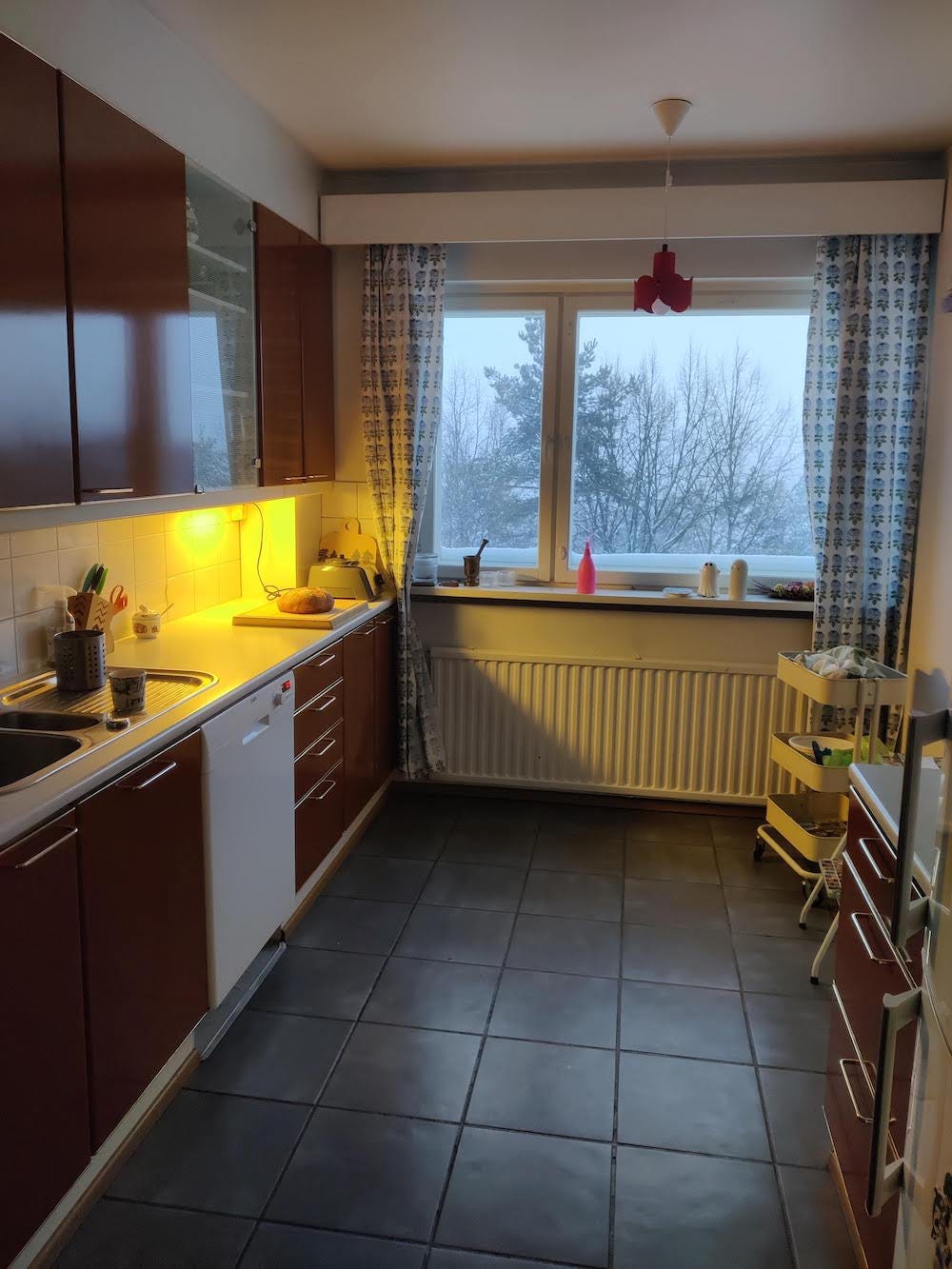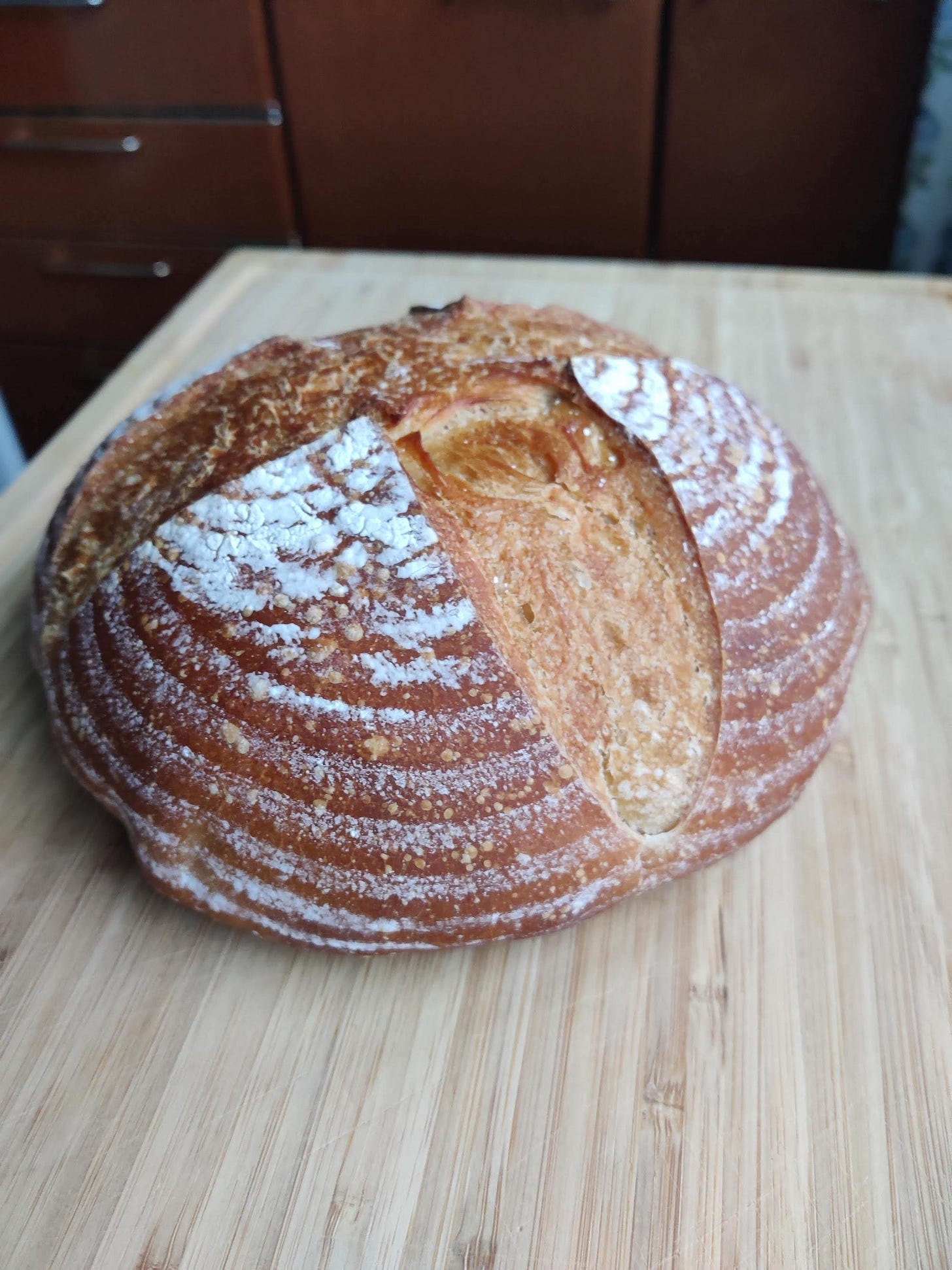How to use a poolish to make great bread
Light and airy bread for everyday use
Hello, dear friends. Thank you once again for letting me grace your inboxes. This is a post for all subscribers, free and paid alike. Please consider upgrading to receive everything from The Recovering Line Cook, including bonus video content at the bottom of this post.
It is exceptionally snowy here in Finland this week.
Pushing the pram outside has become a full-body workout, and, since the snow fallen is taller than our tiny dog Otto, I’m increasingly concerned I’m going to lose him in the snowy depths every time we’re out for a walk.
On the plus side, we’ve finished moving into our new place in the Finnish city of Turku, and I can finally say I have a kitchen big enough to swing a ferret in.
It might not look much but it really feels like someone who cooks designed this one. Lots of work surface, great lighting, and loads of cupboard space. This feels like home already.
Look closely and in that kitchen picture you might make out a loaf of bread.
Today, I’d like to talk about that…
A French baker in Sweden
When I cooked at a restaurant called Oaxen Slip in Stockholm, I found something particularly beautiful in the walk-in fridge one day.
It was a loaf of bread unlike any I’d seen before.
It was dark in colour, and oval in shape. The top dusted heavily with flour that had caramelised to creamy beige during its baking. The colour of light butterscotch. Most distinctive of all, it had been scored with such fine and delicate strokes that an intricate pattern of wheat and leaves and tiny flowers had emerged on the top crust.
If there was someone on our team capable of doing that, they’d been keeping it a very good secret.
A few days later I heard that a French baker called Sébastian Boudet was visiting us for a breadmaking workshop.
That beautiful loaf was a taster of his work, and an example of what he wanted to teach us about.
During that really wonderful workshop, two key lessons emerged: the equal importance of ingredient and technique. Sébastian’s passion was sourdough bread, as you’d expect from a great baker. But this was only as important as using the best, organic, heritage flours that had no additives. It was an inspiring way of spending a few hours, even if it was on one of my precious days off.
I also liked hearing about his likes and dislikes. In particular, I appreciated his aversion to bread that had enormous holes in it. The type you see on Instagram getting the oohs and aahs and thousands of likes.
He said something along the lines of “when I eat bread, I want bread, not air.” As someone who had started to get fed up of the sourdough bread we bought for the restaurant that had air pockets the size of my fist, I shared his aversion.
My secret shame? Much as I love sourdough bread, I’ve never kept a sourdough starter alive for more than a month or two and a couple handful of loaves. This is why I appreciated learning from Séb about the poolish pre-ferment method. This being a way of getting great, almost sourdough-y, results from standard baker’s yeast.
What is the poolish method?
Much like a sourdough starter, a poolish is a pre-ferment. Unlike sourdough starter, a poolish uses a very, very small amount of baker’s yeast. This yeast is added to a 50/50 mix of flour and water to slowly develop (about 12-16 hours) to a point that it is active enough to leaven a full loaf of bread.
Even though we are using (often maligned) baker’s yeast, the effect is a pre-ferment that has better, more complex flavour than a normal loaf of bread. In Sebastian’s words himself, the poolish method helps you get a “simple, sourdough flavour”, without the time and effort of actually maintaining a sourdough starter.
I recommend this method to anyone who wants to up their bread game.
A recipe for French-style bread made with poolish pre-ferment
The recipe I’m sharing is perfect for French breads like baguettes, batards and boules. It’s the kind of bread I enjoy everyday for things like sandwiches, toast, and with soup.




